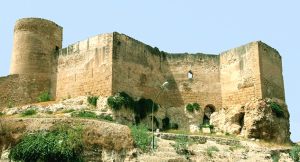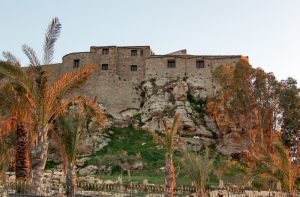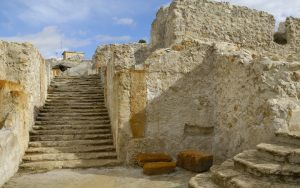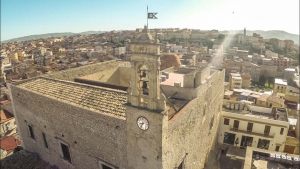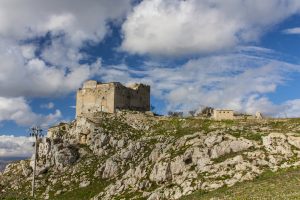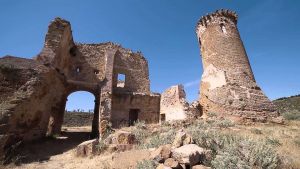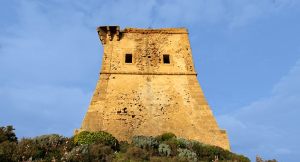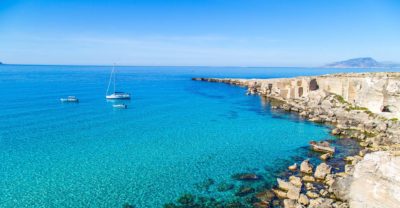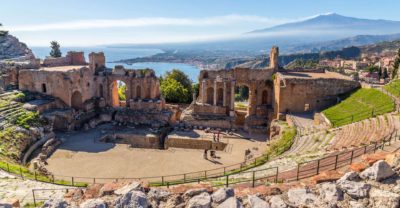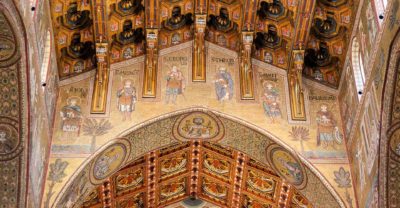Towers and Castles
Agrigento
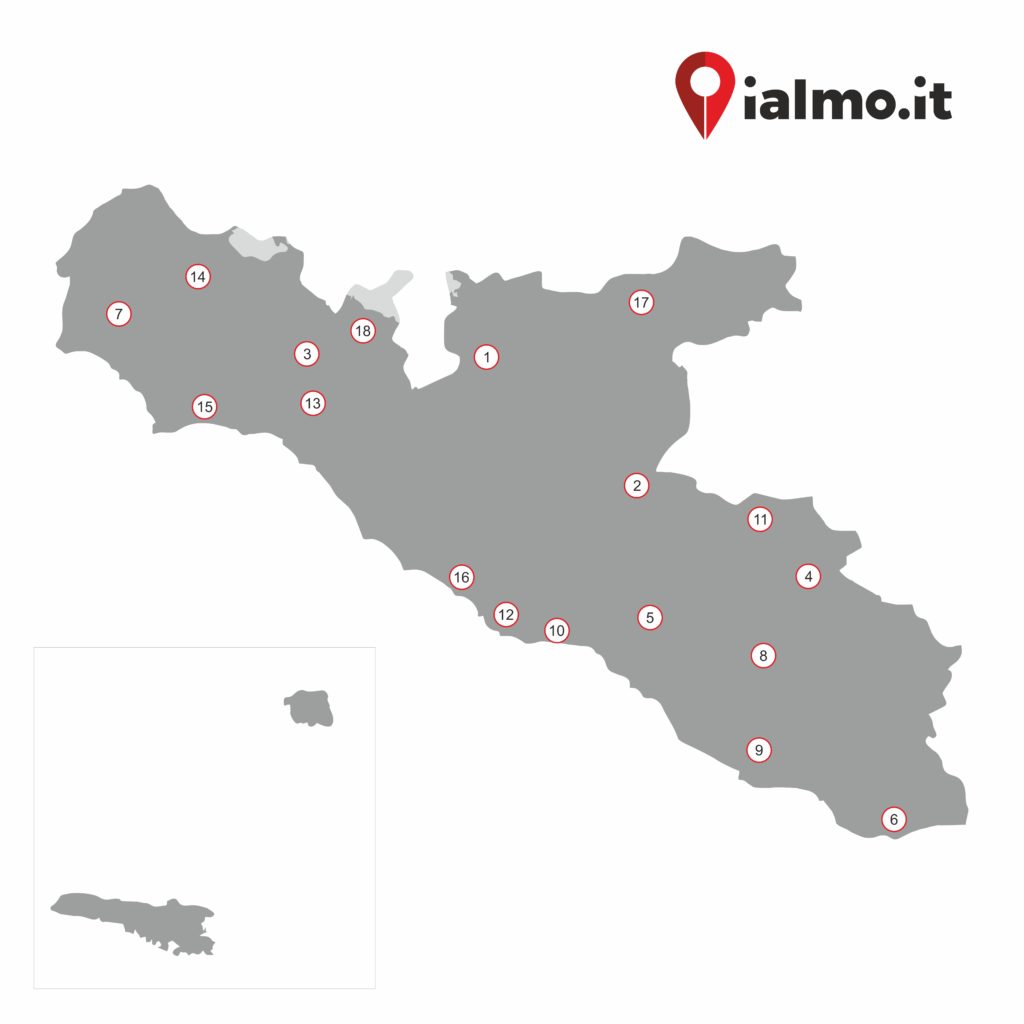
Castello della Pietra d’Amico, Alessandria della Rocca: the building, located near the Castello dike and today reduced to a few ruins, was erected on a rock and quickly assumed a fundamental role also for the neighboring villages. It was Pietro D’Amico, who gave the building its name. In the 16th century the fiefdom, now owned by the noble Abbatellis, was commissioned by the state and finally, in 1542, it was sold to Don Nicolò Barresi. Today little remains of the Castle: only a few pieces of wall, part of the staircase and the rock on which it was built.
Torre del Salto d’Anjou, Aragon: called “in Turri”, the famous Torre del Salto d’Anjou rises about 12 km from the town. From the rectangular shape, incorporated into a farmhouse built in the late eighteenth century. from the Morreale family, it is located on a sandstone bench and overlooks the valley of the Muxaro fief and the Platani river. It seems that in 1305 Francesco da Todi, benefiting from the Massario and with the consent of Bishop Bertoddo, could no longer bear the expenses of that place, donated it to Giovanni di Chiaramonte in exchange for the Castle of Morgidiar and other assets. Today the Tower preserves a huge historical, artistic, architectural and cultural heritage.
Castle of the Queen Sibilla, Caltabellotta: the Castle is known both as Count Luna and as the Castle of the Queen Sibilla since it is historically established that it was the place where Queen Sibilla was hosted and where she resided, preferably, the Luna family at the time of the “Case of Sciacca “. Rebuilt in 1090 at the arrival of the Normans, few signs remain of what was supposed to be an impregnable stronghold: only a wall, a significant portal and the foundations of some rooms.
Castello Bonanno, Canicattì: it was probably built in 1089 by Roger the Norman in the place where previously an Arab fortress was built, even if what remains of the Castle does not allow historians to venture more precise reconstructions. The entrance was made up of an imposing central door that, beyond a covered courtyard, introduced into a large courtyard where stores, stalls, barns, lodgings and a small chapel were opened. Inside there was a precious Armeria, famous throughout Sicily, and now exhibited at the National Museum of Capodimonte. From 1507 the Castle was owned by the Bonanno family, which is probably also due to the construction of the Clock Tower in the square outside.
Castello Chiaramonte, Favara: it was built in the second half of the 13th century and was used as a hunting lodge by Federico II. According to what is reported in a plaque with inscriptions in Latin, Italian and Sicilian located in the entrance hall, it was the subject of alterations as early as 1488 by the master Bernardo Sitineri. It has a quadrangular plan of about 31 meters on the side, while an ogival portal leads to a hallway in front of which opens a large courtyard with portals and mullioned windows at the top that lighten the compact appearance of the building. The ground floor rooms have barrel vaulted ceilings and single lancet windows. The residential floor houses the chapel with a splendid portal, a part of the apse and a domed roof of the Arab type of considerable value.
Castel Sant’Angelo, Licata: rises to the east of the Licata mountain and dominates the port and the city. Surrounded by archaeological remains such as necropolis, sanctuaries and monumental tombs, it was built starting from 1615 next to a pre-existing sighting tower built between 1583 and 1585 on a project by the engineer Camillo Camillani. The care for the armament was entrusted to Serpione Cottone, Marchese d’Altamura. It was completed in 1640 and is a rare example of a 17th century Sicilian Baroque fortress. By decree dated 8 July 1969 the Castle was declared of particular artistic and historical interest and in the 1980s it was the subject of a restoration by the Superintendent BB.CC.AA. of Agrigento. The Torre di Gaffe and the Torre San Nicola can still be mentioned in the municipality.
Castello Burgimilluso, Menfi: also known simply as the Swabian castle of Menfi, the building was built in 1238 by Frederick II of Swabia perhaps on the ruins of an Arab fortress and is the oldest and most important monument of the municipality. Unfortunately, today only a four-storey Federiciana Tower remains of the Castle, which, destroyed by the earthquake of January 1968, was then rebuilt, preserving its ruins and resuming its irregular shape. Noteworthy in the seaside village of Porto Palo (fraction of Menfi), the watchtower built in 1583 to defend the city from possible corsair attacks.
Castello Chiaramontano di Naro, Naro: built in the typical Gothic style very common in Sicily, it was probably built by the Normans in the twelfth century on an ancient Arab fortress that was guarding the pleasant Valle del Paradiso. The Castle was renovated in 1330 by Frederick III of Aragon who built the keep, the large square tower. In 1336 Matteo Chiaramonte made new modifications to the fort when Naro passed under his lordship. Today the only room that preserves the original structure is the great Sala del Principe.
Torre San Carlo, Palma di Montechiaro: stands on a hill in the fishing and fishing center of Marina di Palma, a hamlet of Palma di Montechiaro. Built in the seventeenth century by the will of Carlo Tomasi, it was a place of sighting and protection of the coast from pirate raids. In the hinterland of Marina di Palma, in an extremely panoramic place, there is instead the Castle of Montechiaro, now degraded, which tradition attributes to the will of Federico III Chiaramonte.
Torre del Caricatore, Porto Empedocle: also known as Torre Carlo V, is a building of medieval origin built around the fourteenth century with the aim of protecting the coast from possible Saracen invasions. The Tower has long been used as a prison while today it houses an artistic-cultural center.
Castelluccio di Racalmuto, Racalmuto: also known as Gibellini Castle, the fortress dates back to the Normans and was later donated by Federico d’Aragona to Federico II Chiaramonte. The Castle is located about 7 km from the town and is built on a polygonal structure with a compact mass and walls of about two meters thick closed by two tall and colossal towers and accompanied by two rows of twelve windows. The tower on the left is preserved in its original form while the tower on the right has been rebuilt in the belvedere. At the beginning of the twentieth century the castle was declared a national monument.
Tower of Monterosso, Realmonte: located about 3 km from the territory of the town, it is a Saracen Tower probably dating back to the fifteenth century, although recent studies suggest that its construction dates back a long time before. In fact, the building seems to be a reconstruction of the ancient tower that was used as a watch tower to defend the territory from attacks by enemies by sea. The Tower has a square plan and is divided into three environments.
Castello di Poggiodiana, Ribera: a few kilometers from the town are the ruins of the fourteenth-century castle built by the will of Guglielmo Peralta and later owned by the Counts of Luna. What remains today of the ancient castle is a crenellated cylindrical tower and a square tower.
Fort of Mazzallakkar, Sambuca di Sicilia: the ruins of the fort are located close to the waters of Lake Arancio, in the Mulini area, and for almost six months a year they are partially submerged by the waters. Probably built after the year 830, the fort served to defend the territory around the Castle of Zabut. The building has a quadrangular shape, the towers are equipped with loopholes and the height of the walls reaches about 4 meters. The ancient towers of Pandolfina and Cellaro are still worth mentioning outside the historical center of Sambuca di Sicilia.
Castello Nuovo di Sciacca, Sciacca: the Castle is also known as Castello dei conti Luna because after having been erected in 1380 by Guglielmo Peralta, Count of Caltabellotta, it passed to the husband of his daughter Margherita, Count Arturo di Luna. The complex has a polygonal plan and originally had two floors: the ground floor for the servants and the upper floor for the lodging of the count and his family. Today the building consists of four parts: the city walls, the big tower, the cylindrical tower and the Palazzo del Conte. Still to be reported in Sciacca the Old Castle (or of the Perollo) and the Tower of San Michele.
Chiaramontano Castle of Siculiana, Siculiana: it was built around 1310 by Federico II of Chiaramonte, son of Federico Chiaramonte and Marchisa Prefolio. Located at the north-west end of a rocky ridge, 85 meters above sea level, it was an impregnable fortress thanks to its walls that fell to the edge of the rock. The origin of the fort is Arab and the building is among the eleven castles that resisted Roger the Norman.
Cammarata Castle, Cammarata: the Castle built in the XIII century, was the residence of the Lords of Cammarata. Today very little is left of the entire structure: some perimeter walls, a part of the ancient building and the Tower. After the end of feudalism, a dispute arose between the heirs of the Cammarata and the Municipality to contend for ownership of the Castle. The Municipality touched a part of it, namely the Tower, which was used as a district prison until the seventies. Later the entire structure was considered architectural heritage to be saved and was the subject of restoration and consolidation interventions.
Castello di Burgio, Burgio: the Baronial Castle is the oldest and most important monument in the country. Located in the Santa Lucia district (Piazza Castello), in a dominant position over the inhabited center, the Castle is certainly of Arab origin (XII century) although it was certainly later restored by the Normans.
